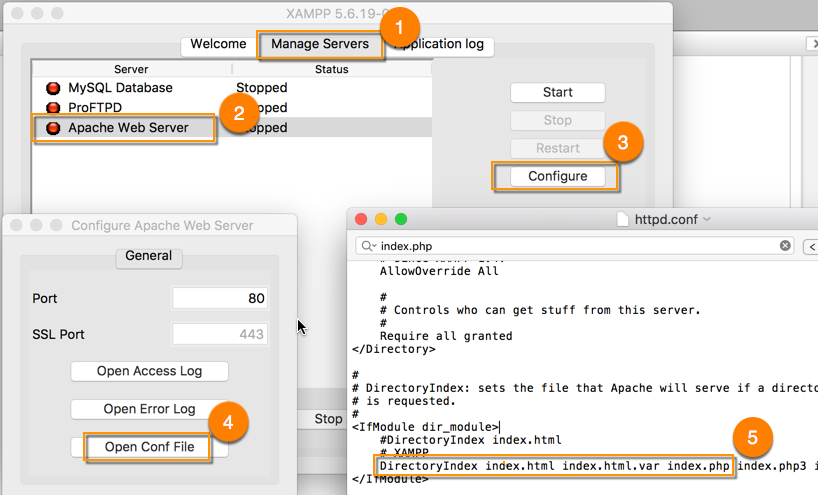Loading Files On Xampp For Mac
How to Install WordPress on Localhost using XAMPP? XAMPP works perfectly on Windows, Linux, and Mac. XAMPP comes with two components that are essential for installing WordPress – Apache and MySQL. Apache is used to create the local server. And MySQL lets you create the database for your WordPress site. /Program Files/XAMPP/htdocs. Save it to your computer, open up the.dmg file, then install it by dragging it into your Applications folder. That’s how quick it is to install XAMPP. Now, go into your Applications folder, and open up the XAMPP application. Mozilla firefox for mac 10.7.5. Tried in XAMPP on a mac to use composer to install a pear package. What to do with this error? Leonidass-mbp:website3 yyyy$ composer install Loading composer repositories with package. Installing a local development environment with XAMPP in Mac OS is even easier than on a PC. All you need to do is download the.dmg file, open it, and either double click on the XAMPP icon or drag it to your application folder to install the program. In this video you will learn, - How to install xampp - Access local database - Run files on local server Like - Subscribe.
Installing XAMPP on Windows • and Install Visual Studio 2008 redistributable package because XAMPP will need this to run properly. • and Install XAMPP for PHP 5.X for Windows- Be sure to select the proper version of PHP as there are many choices. • Allow the program to make changes to your machine. • It is VERY important to install on the root of c:. If you don't, some functions of XAMPP may have restrictions that will force you to adjust the settings in your UAC, which isn't recommended. • Double-click on the new XAMPP Control Desktop shortcut or Use the Search feature in Windows 10 to find the XAMPP Control App, which opens up the XAMPP Control Panel Application.
There you will see a column of 'Start' buttons. Select the ones for MySQL and for Apache.you should now see a green 'Running' indicator • NOTE: If you find another service is already running on port 80 on your computer, read our instructions on like 8080. Testing your XAMPP Installation In your web browser, go to. You should see the start page of XAMPP: Class Files • • After downloading the class files, create a folder in htdocs named 'Webucator' and extract your class files in that folder. Setting the MySQL Password on Windows The PHP files use 'pwdpwd' for the MySQL root password, while the default password is NO password. • Click Admin next to MySQL on the XAMPP Control Panel to bring up the phpMyAdmin.
• Choose the mysql database on the left. • Then choose the SQL tab on the top and run the following statement: SET Password=PASSWORD('pwdpwd'); • You also need to update line 21 of the xampp/phpMyAdmin/config.inc.php file with the new password ( pwdpwd). Note: In order to connect to the myPHPAdmin center, you must do these steps in order.
Install Xampp On Windows 10

Installing Northwind Database using XAMPP NOTE: you should download the class files above before following these instructions, as it contains the Northwinds Database file(s). • To install the Northwind database used in class, click Admin next to MySQL on the XAMPP Control Panel to bring up the phpMyAdmin. That should take you to • If it asks you to login, the username is root and the password is pwdpwd. • On that page, click on the Import link under the Localhost heading. After, it should say 'Importing into the current server'.
• Browse to the Northwind-MySQL.sql file in your class files (c: xampp htdocs Webucator). • Click the Go button on the bottom left of the page. • You should get a Success message and Northwind should be added to your list of Databases. Recommended Code Editor• Visual Studio Code () • While you may use a different editor or IDE, Visual Studio Code is an excellent IDE to learn to code on. It provides a nice balance of power and simplicity and it is available on Windows and Mac.
Designate your testing server in Dreamweaver NOTE: The following only applies if you are using Dreamweaver. If you are not, please ignore this section. • Go to Site, then New Site. • In the Site Setup dialog, fill in the Site Name (e.g., PHP) and browse to the Local Site Folder (e.g., c: XAMPP htdocs Webucator ClassFiles on Windows or Applications XAMPP xamppfiles htdocs on a Mac). • Choose the Servers tab. • At the bottom of the box on the right, click +. • On the Basic tab, provide a Server Name, set Connect using to Local/Network, ensure the Server Folder matches the local site folder you specified in step 2, and set the Web URL to • Click the Advanced button.